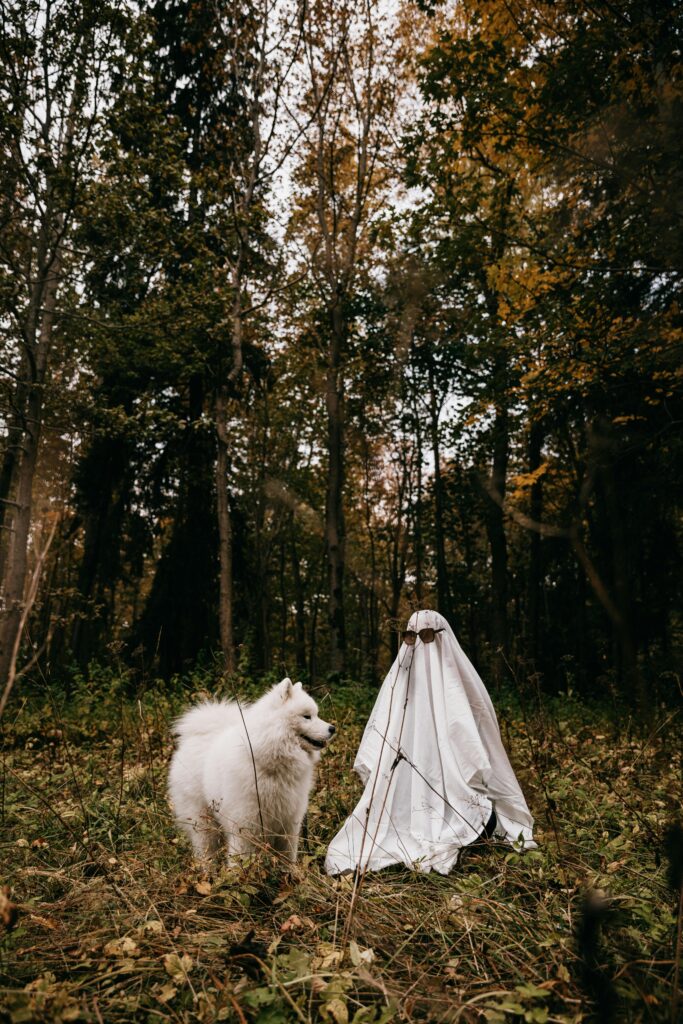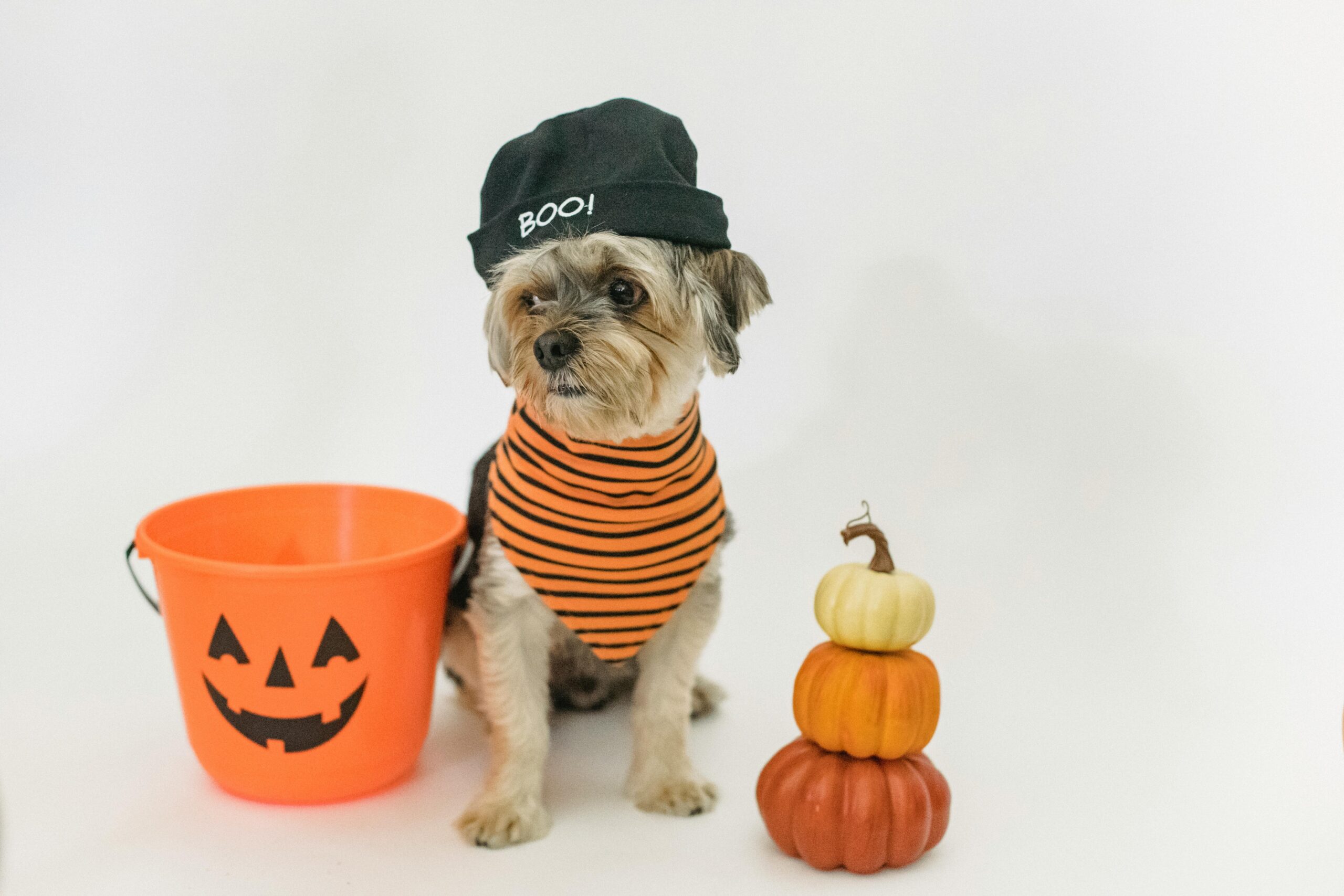Halloween is a fun holiday for families, but for dogs it can be confusing and stressful. Strange costumes, constant doorbell rings, and tempting candy create the perfect storm of excitement and potential danger.
As a trainer, I remind dog owners in Canton that preparation is key. With the right strategies, your dog can stay safe and calm while you enjoy the night.

Why Halloween Can Be Stressful for Dogs
For dogs, Halloween combines many of their biggest triggers all in one evening:
- Unfamiliar costumes: Masks, capes, and face paint make it difficult for dogs to recognize people.
- Frequent doorbell rings: Excitement and barking often spike with each new visitor.
- Candy and chocolate: Tempting smells but dangerous for dogs if ingested.
- Loud noises: Fireworks, shouting, or spooky sound effects can trigger anxiety.
Dogs thrive on routine, and Halloween disrupts that routine in a big way. Preparing ahead ensures your dog stays safe and calm.
Costume Considerations for Dogs
Many owners love dressing up their dogs for Halloween, but not every dog is comfortable in a costume.
Tips for safe costuming:
- Make sure the costume fits properly and does not restrict breathing or movement.
- Avoid dangling accessories that can be chewed or swallowed.
- Introduce the costume days before Halloween so your dog can get used to it gradually.
- If your dog looks stressed, skip the costume and try a festive bandana or collar instead.
Candy and Food Hazards
Halloween candy is dangerous for dogs. Chocolate, xylitol (a common sugar substitute), and even candy wrappers can be toxic or cause digestive issues.
Safety tips:
- Keep candy bowls and trick-or-treat bags well out of reach.
- Remind children not to share treats with the dog.
- Have safe alternatives like dog biscuits or pumpkin snacks ready for your pup.
For more on healthy habits and safe feeding, check out our blog on summer foods that are and aren’t safe for dogs. The lessons apply year-round, including on holidays filled with sweets.
Decorations and Spooky Sounds
Inflatable decorations, flashing lights, and eerie noises may confuse or scare dogs. To prepare:
- Walk your dog past decorations during the day to desensitize them.
- Use positive reinforcement when they approach calmly.
- Play recordings of Halloween sounds at a low volume during training sessions to build tolerance.
Doorbell Chaos and Trick-or-Treaters
The doorbell may ring dozens of times on Halloween night, and each time brings new costumes and excitement. For some dogs, this triggers barking, jumping, or anxiety.
How to prepare:
- Practice “place” training by sending your dog to a mat or bed when the doorbell rings.
- Use treats to reward calm behavior.
- Set up a quiet, crate-friendly space away from the door if your dog gets overstimulated.
- Play white noise or music to reduce the sound of constant knocking or ringing.
Walks on Halloween Night
If you plan to take your dog for a walk, be cautious. Streets will be busier than usual, and costumes can confuse or scare some dogs.
Tips for safe walks:
- Walk before trick-or-treating hours to avoid the busiest times.
- Use a reflective leash or harness for visibility.
- Keep your dog close and reinforce leash manners to prevent lunging at costumes or decorations.
The American Kennel Club provides excellent reminders for managing your dog’s safety during this busy holiday.
Why Training Matters During Holidays
Halloween can be chaotic, but it also provides valuable opportunities to reinforce obedience. Commands like “place,” “leave it,” and “down-stay” are especially useful for managing holiday stress.
Our Basic & Advanced Obedience Program is designed to prepare dogs for exactly these kinds of real-world challenges. A dog who can stay calm during Halloween will handle many other distractions more easily.
Want a calm, confident dog on Halloween and beyond? Contact us today to start training that lasts through every season.

